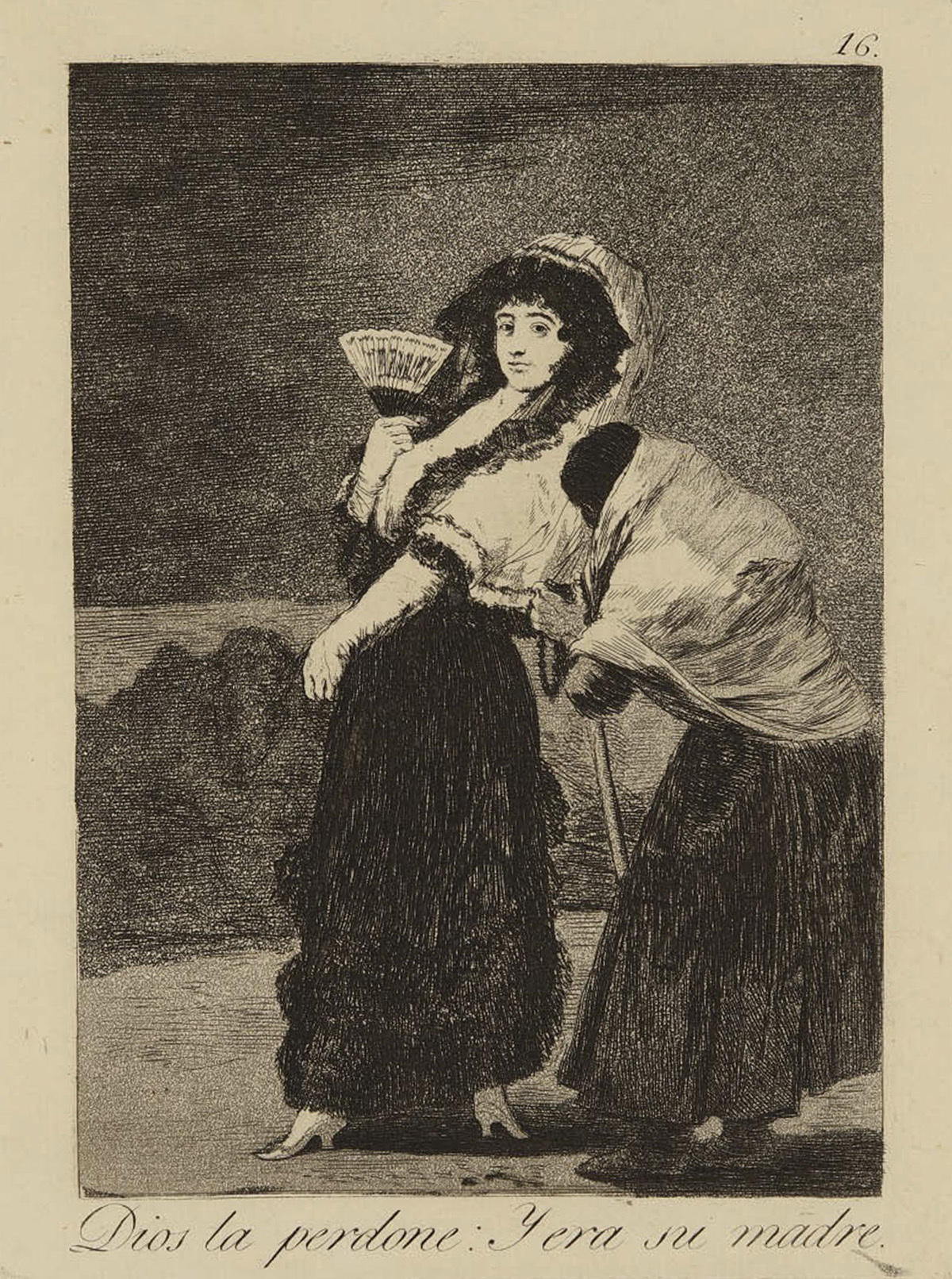They say that, in the evenings they organize with relatives and friends, the Dukes of Osuna usually have fun playing the four
Caprichos
de Goya that are part of their collection.
Shredding those images is one more distraction.
Under
a mask of exaggerated features and caricatural airs
, the vices and defects of some social strata are crudely and unadorned in this series of engravings published in 1799. This same year, Goya became the first chamber painter in Carlos's time. IV.
It is no coincidence that it is the monarch who undoes the predicament in which the painter finds himself after
being singled out by the Inquisition for the content of his work
.
The deficit and unproductive aristocracy, the most reactionary clergy, and a people who are easily manipulated are the object of the artist's scathing criticism, who finally chooses to withdraw the series and present it to Carlos IV.
It is only on sale for two weeks.
"Goya was accused, but his movement was faster and prevented the trial from ever taking place. In enlightened aristocratic circles the
Caprichos
circulated a lot
and, probably,
the king also had knowledge of these prints and appreciated them,
" explains historian Javier Blas, Project Coordinator of the Royal Academy of Fine Arts of San Fernando, where a complete edition of the series is on display today.
They are hot.
Caprices 13
When Goya offers it to him as a gift, the king accepts both the plates and all the remaining copies, practically the entire edition.
In return, Goya negotiates with the Crown a pension for his son Javier.
This prevents the real reason for the exchange from coming to light
: to preserve your security after the indictment.
"I gave the plates to the King more than 20 years ago like the other things that I have recorded that are in His Majesty's intaglio, and with all this they accused the Holy [Inquisition]", says Goya himself in a letter addressed to his friend Joaquín María Ferrer and dated December 1825.
After being transferred to the National Calcography, the prints are today one of the pride of the Royal Academy, which
has recently reorganized the painter's work, improving the accessibility of the itinerary
.
"Much has been said about what Goya's position could be with the
Caprichos
and, at times, it has been thought that it could be anti-monarchical, but it is not true," continues Blas.
"There is an alliance of Goya with the monarchs and with certain top-level politicians, a small but very powerful group, against the privileged levels of the inherited society. If Goya, a few decades earlier, had expressed such a critical message, he would have had many difficulties. His fortune was that political power was held by the most open minds of his time, with extraordinarily advanced thinking. "
The timelessness and universality of the
Caprichos
are the two aspects most praised by scholars of his work, whose message remains topical.
"At that time, there was a fundamental change of paradigm," the historian points out.
"There is a turning point with the change of class society from the Old Regime to the birth of modern society. Our historical context is not the same: we no longer live in a class society, but there are privileged social classes.
Adapting the message to the new times, it is completely current
".
It is in 1797 when Goya is forced to stop teaching at the Academy due to his deafness, given
the impossibility of answering the questions of his students, which make him an object of ridicule
.
This is what he confesses in a letter addressed to the institution.
"Dear Sir. I participate in You. I attended the principles room last night: and for more efforts than my desires to be useful, I lost hope for now of being able to serve; for not hearing anything they said to me, and be the cause of fun for the boys: I am deeply sorry to give this to my colleagues but it is necessary that You make the appropriate decision, sending as much as you like ... Francisco de Goya ".
However, the artist's bond with the institution is still present today in the
13 works that it houses framed between two of his self-portraits
.
Special mention deserves his set of the five small-format tables:
The burial of the sardine
,
Procession of disciplinarians
,
Bullfight
,
The crazy house
,
The Court of the Inquisition
.
Considered as "cabinet pictures", Goya left free course in all of them "to whim and invention".
God forgive her, and she was her mother.
Caprices 39
According to the criteria of The Trust Project
Know more
art
Madrid
culture
ArteAlberto Corazón: "A work must have aesthetic dignity and mystery"
CultureA woman from Granada at the helm of the Bank of Spain's art collection
Art Conservation professionals warn about the proliferation of 'ecce homos' in various disciplines
See links of interest
Check Lottery 2020
Arsenal - Chelsea

